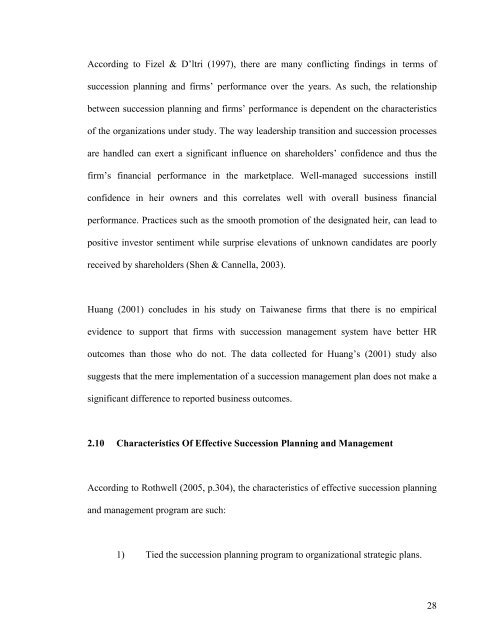CHAPTER 1: INTRODUCTION 1.0 Chapter Overview - DSpace@UM
CHAPTER 1: INTRODUCTION 1.0 Chapter Overview - DSpace@UM
CHAPTER 1: INTRODUCTION 1.0 Chapter Overview - DSpace@UM
You also want an ePaper? Increase the reach of your titles
YUMPU automatically turns print PDFs into web optimized ePapers that Google loves.
According to Fizel & D’ltri (1997), there are many conflicting findings in terms ofsuccession planning and firms’ performance over the years. As such, the relationshipbetween succession planning and firms’ performance is dependent on the characteristicsof the organizations under study. The way leadership transition and succession processesare handled can exert a significant influence on shareholders’ confidence and thus thefirm’s financial performance in the marketplace. Well-managed successions instillconfidence in heir owners and this correlates well with overall business financialperformance. Practices such as the smooth promotion of the designated heir, can lead topositive investor sentiment while surprise elevations of unknown candidates are poorlyreceived by shareholders (Shen & Cannella, 2003).Huang (2001) concludes in his study on Taiwanese firms that there is no empiricalevidence to support that firms with succession management system have better HRoutcomes than those who do not. The data collected for Huang’s (2001) study alsosuggests that the mere implementation of a succession management plan does not make asignificant difference to reported business outcomes.2.10 Characteristics Of Effective Succession Planning and ManagementAccording to Rothwell (2005, p.304), the characteristics of effective succession planningand management program are such:1) Tied the succession planning program to organizational strategic plans.28
















